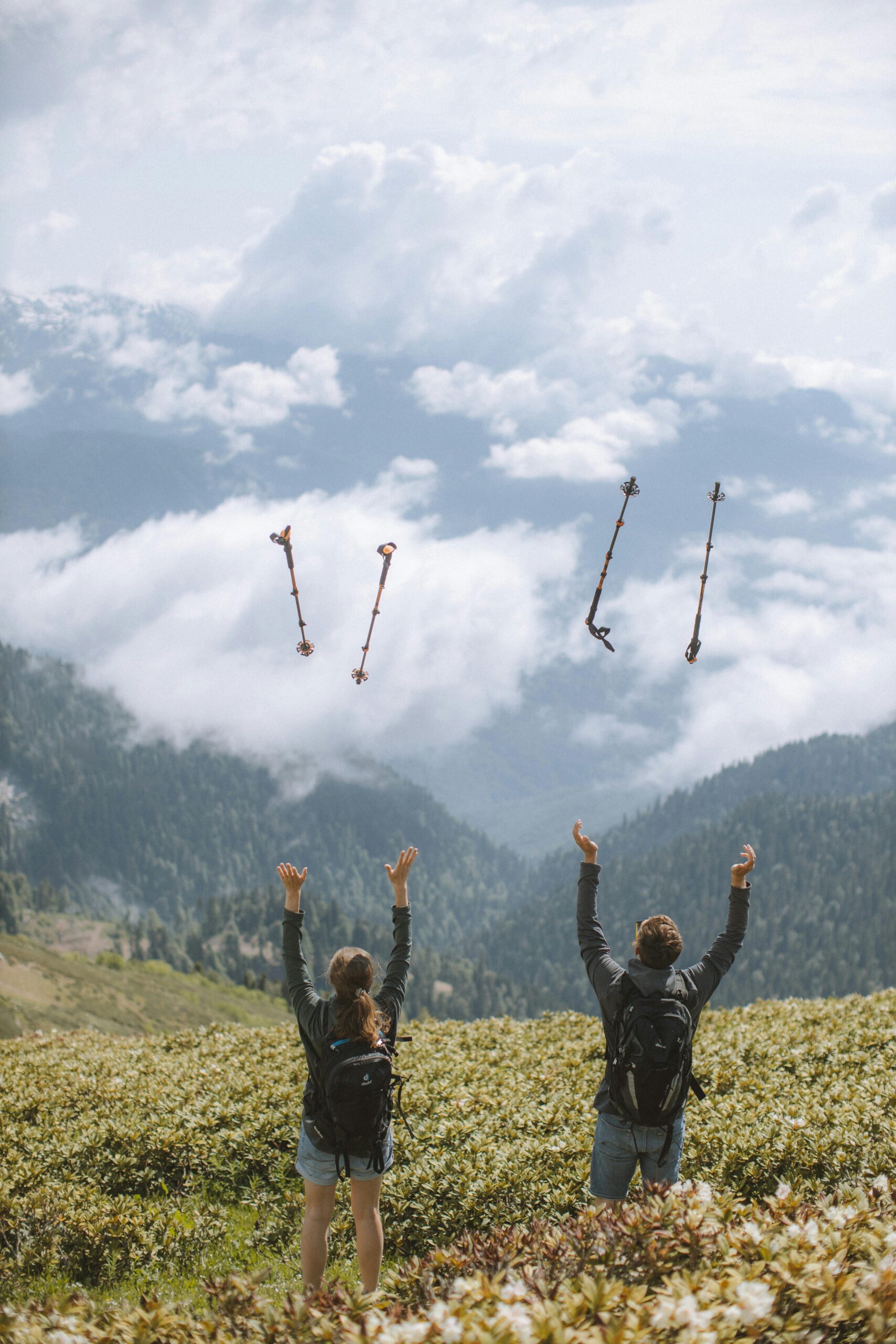When you picture a hiker in the wild, you might imagine a rugged trail, a sturdy backpack, and—more often these days—trekking poles in hand. But are these lightweight walking sticks just a trendy accessory, or do they actually make a difference on the trail?
Whether you’re a beginner wondering if trekking poles are necessary or a seasoned hiker weighing their benefits, this guide breaks down the facts. Let’s explore what trekking poles do, who benefits most from them, and how to use them effectively for your next outdoor adventure.
1. What Are Trekking Poles, Really?
Trekking poles, also known as hiking poles or walking sticks, are adjustable-length poles designed to assist with balance, support, and shock absorption while hiking. Most modern trekking poles are made of lightweight materials like aluminum or carbon fiber and come with features like:
- Adjustable height
- Shock absorption systems
- Wrist straps
- Interchangeable tips for different terrain
💡 Pro Tip: Choose poles with ergonomic grips for extra comfort during long hikes.
2. The Benefits of Using Trekking Poles
So, are they worth it? In many cases—yes! Here’s why hikers of all levels use trekking poles:
Improved Balance
Poles act like extra legs, helping you stay stable on uneven terrain, slippery slopes, or rocky paths.
Reduced Joint Impact
Using poles reduces strain on your knees, hips, and ankles, especially during downhill descents. This is a game-changer for those with joint issues.
Better Posture & Core Engagement
Trekking poles encourage an upright posture and engage your core, turning your hike into a full-body workout.
Increased Endurance
By distributing the effort between your upper and lower body, poles can help you conserve energy on longer hikes.
Support with Heavy Loads
Backpackers carrying heavy gear benefit from the extra support trekking poles provide, helping to stabilize their stride and protect their back.
💡 Pro Tip: If you hike with a camera or binoculars, trekking poles can double as a monopod or support for steady shots!
3. Are Trekking Poles Right for You?
While trekking poles offer plenty of advantages, they may not be for everyone in every situation. Here’s how to decide:
| Great For… | Maybe Skip If… |
|---|---|
| Long-distance treks | You prefer ultralight hiking |
| Steep or uneven terrain | You’re walking a short, flat trail |
| Joint pain or recovery | You find them cumbersome |
| Backpacking trips | You need free hands for scrambling |
💡 Pro Tip: Try renting or borrowing a pair before investing—especially if you’re new to using them.
4. How to Use Trekking Poles Correctly
Using trekking poles effectively takes a little practice, but the payoff is worth it.
Basic Technique:
- Adjust the height: Your elbows should form a 90-degree angle when holding the poles upright.
- Sync your stride: Opposite pole moves with opposite foot (like Nordic walking).
- Shorten on uphills, lengthen on downhills for better support and power.
Tips for Beginners:
- Don’t grip too tightly—let the straps do the work.
- Keep your movements natural to avoid muscle fatigue.
- Use rubber tips for paved trails and carbide tips for dirt or gravel.
💡 Pro Tip: Poles are great for testing stream depth or probing snow and mud before stepping in!
5. Best Conditions for Trekking Poles
Still not sure if you need them? Here are a few scenarios where trekking poles shine:
- 🏔 Steep ascents or descents
- 🏞 River crossings
- ❄️ Snowy or muddy trails
- 🎒 Backpacking with a heavy load
- 🥾 Multi-day hikes
If you’re hiking in any of these conditions, you’ll likely find trekking poles to be a worthwhile investment.
Conclusion: Worth It for Most Trails and Trekkers
While not essential for every hiker, trekking poles offer undeniable benefits for balance, comfort, and joint protection. If you’re tackling rugged terrain, carrying a heavy pack, or looking to reduce strain on your knees, they’re more than just a fancy accessory—they’re a valuable tool that can enhance your experience and keep you hiking longer.
🎒 Ready to hit the trail with more confidence and less joint pain? Try trekking poles on your next hike and see the difference they make.




Leave a Reply